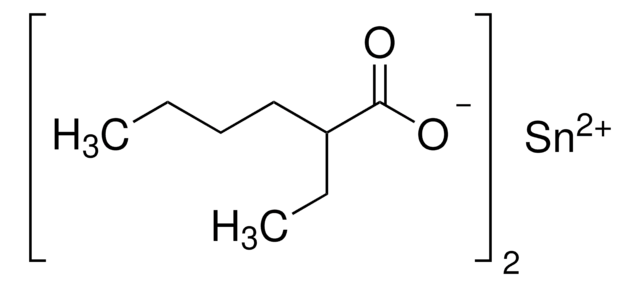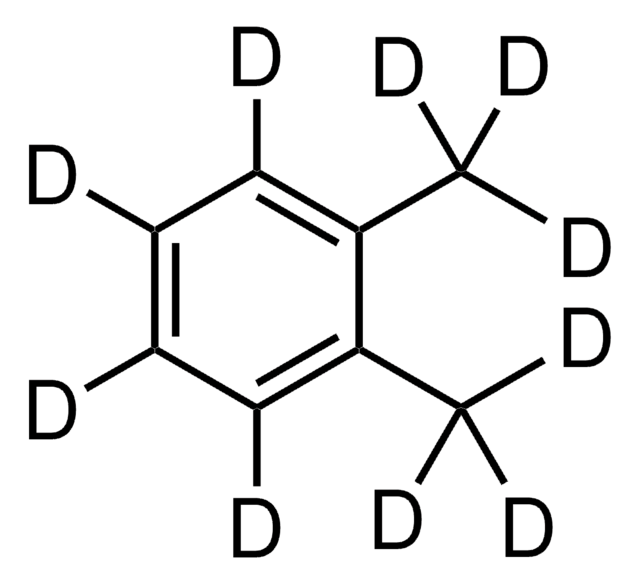8.08697
o-Xylene
for synthesis
Sinónimos:
1,2-Dimethylbenzene
About This Item
synthesis grade
16 mmHg ( 37.7 °C)
7 mmHg ( 20 °C)
Productos recomendados
grade
for synthesis
synthesis grade
Quality Level
vapor density
3.7 (vs air)
vapor pressure
<0.1 atm ( 21.1 °C)
16 mmHg ( 37.7 °C)
7 mmHg ( 20 °C)
assay
≥98% (GC)
form
liquid
autoignition temp.
867 °F
expl. lim.
7 %
dilution
(for synthesis)
refractive index
n20/D 1.505 (lit.)
bp
143-145 °C (lit.)
mp
-26--23 °C (lit.)
transition temp
flash point 30 °C
density
0.879 g/mL at 20 °C (lit.)
storage temp.
2-30°C
SMILES string
Cc1ccccc1C
InChI
1S/C8H10/c1-7-5-3-4-6-8(7)2/h3-6H,1-2H3
InChI key
CTQNGGLPUBDAKN-UHFFFAOYSA-N
General description
Application
- As an additive of dope solutions in the preparation of PES (polyethersulfone) hollow fiber membranes.
- To produce phthalic anhydride.
Analysis Note
Density (d 20 °C/ 4 °C): 0.878 - 0.881
Identity (IR): passes test
signalword
Danger
Hazard Classifications
Acute Tox. 4 Dermal - Acute Tox. 4 Inhalation - Aquatic Chronic 3 - Asp. Tox. 1 - Eye Irrit. 2 - Flam. Liq. 3 - Skin Irrit. 2 - STOT SE 3
target_organs
Respiratory system
Storage Class
3 - Flammable liquids
wgk_germany
WGK 2
flash_point_f
89.6 °F - closed cup
flash_point_c
32.0 °C - closed cup
Certificados de análisis (COA)
Busque Certificados de análisis (COA) introduciendo el número de lote del producto. Los números de lote se encuentran en la etiqueta del producto después de las palabras «Lot» o «Batch»
¿Ya tiene este producto?
Encuentre la documentación para los productos que ha comprado recientemente en la Biblioteca de documentos.
Los clientes también vieron
Nuestro equipo de científicos tiene experiencia en todas las áreas de investigación: Ciencias de la vida, Ciencia de los materiales, Síntesis química, Cromatografía, Analítica y muchas otras.
Póngase en contacto con el Servicio técnico










